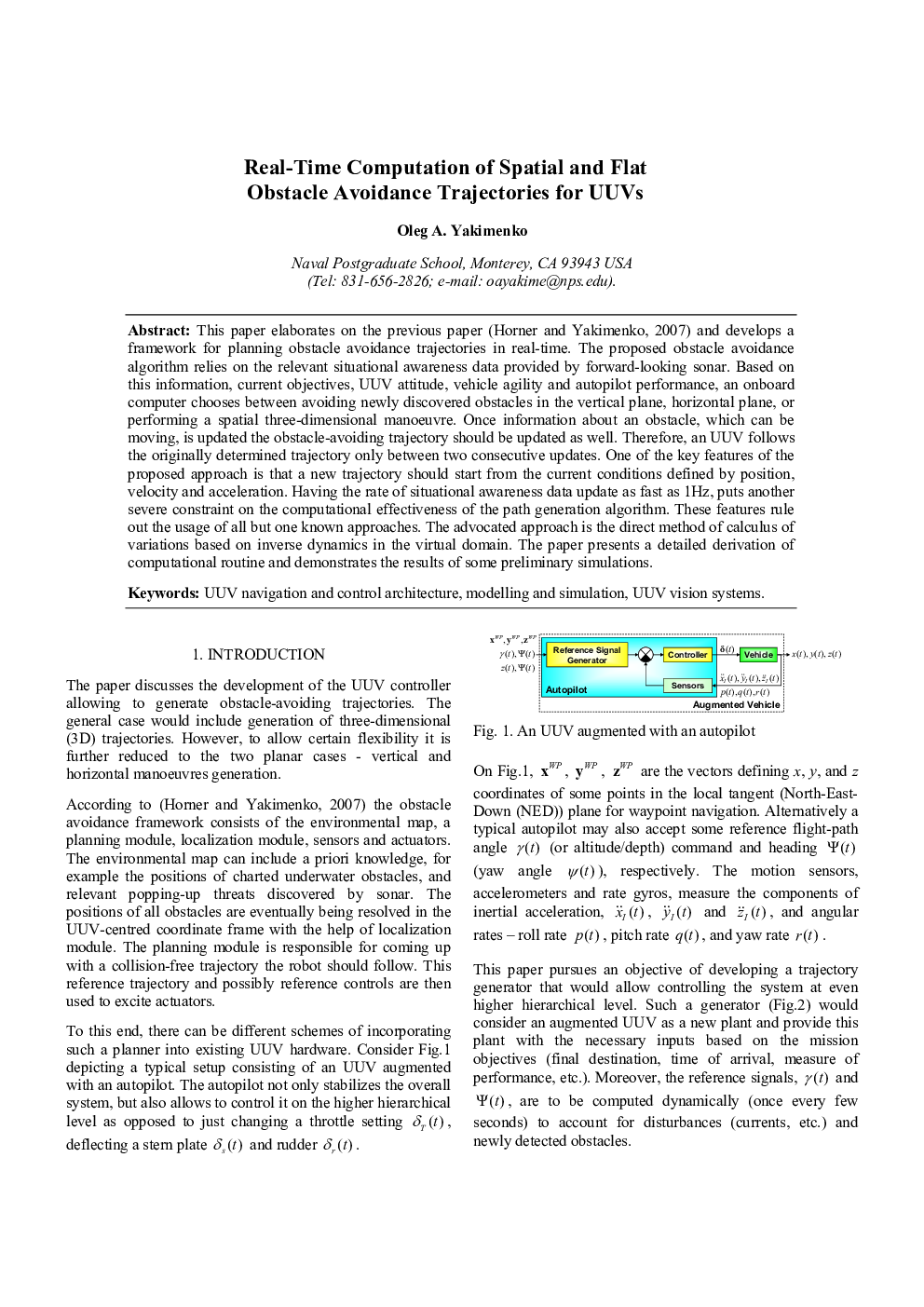| کد مقاله | کد نشریه | سال انتشار | مقاله انگلیسی | نسخه تمام متن |
|---|---|---|---|---|
| 711679 | 892134 | 2008 | 6 صفحه PDF | دانلود رایگان |

This paper elaborates on the previous paper (Horner and Yakimenko, 2007) and develops a framework for planning obstacle avoidance trajectories in real-time. The proposed obstacle avoidance algorithm relies on the relevant situational awareness data provided by forward-looking sonar. Based on this information, current objectives, UUV attitude, vehicle agility and autopilot performance, an onboard computer chooses between avoiding newly discovered obstacles in the vertical plane, horizontal plane, or performing a spatial three-dimensional manoeuvre. Once information about an obstacle, which can be moving, is updated the obstacle-avoiding trajectory should be updated as well. Therefore, an UUV follows the originally determined trajectory only between two consecutive updates. One of the key features of the proposed approach is that a new trajectory should start from the current conditions defined by position, velocity and acceleration. Having the rate of situational awareness data update as fast as 1Hz, puts another severe constraint on the computational effectiveness of the path generation algorithm. These features rule out the usage of all but one known approaches. The advocated approach is the direct method of calculus of variations based on inverse dynamics in the virtual domain. The paper presents a detailed derivation of computational routine and demonstrates the results of some preliminary simulations.
Journal: IFAC Proceedings Volumes - Volume 41, Issue 1, 2008, Pages 202-207